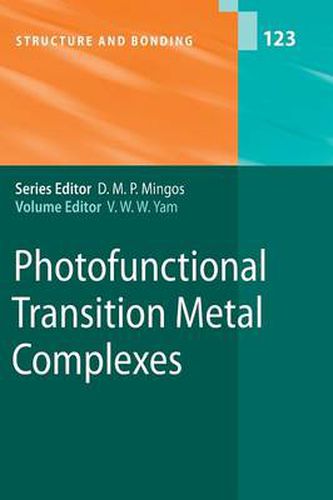Readings Newsletter
Become a Readings Member to make your shopping experience even easier.
Sign in or sign up for free!
You’re not far away from qualifying for FREE standard shipping within Australia
You’ve qualified for FREE standard shipping within Australia
The cart is loading…






This title is printed to order. This book may have been self-published. If so, we cannot guarantee the quality of the content. In the main most books will have gone through the editing process however some may not. We therefore suggest that you be aware of this before ordering this book. If in doubt check either the author or publisher’s details as we are unable to accept any returns unless they are faulty. Please contact us if you have any questions.
Functional materials research is one of the high priority strategic areas of - st velopmentinscienceandtechnologyinthe21 century.Amongstthevarietyof functions,theinteractionofmatterwithlighttogeneratelight-drivenorpho- responsive properties has always been one of the most appealing and attr- tive areas. Recent advances in the exploitation of transition metal complexes in bringing about photo-induced functions have attracted growing attention, particularly in areas related to materials, energy, and biomedical research. Selected examples include the development of molecular triplet emitters for organic light-emitting devices (OLEDs), optical and photo-switches, pho- chemical energy storage, dye-sensitized solar cells, photochemical molecular devices(PMD)andmachines,opticalandluminescenceprobesandchemos- sors,luminescentlabelsandtagsforbiomolecules,andluminescencesignaling and imaging. This volume serves to provide the readers with some fundamentals of - minescent transition metal complexes and the recent exciting developments of a selected variety of functions and potential applications that transition metal complexes can offer for the betterment of the society in areas related to materials, energy, and biomedical research. The ?rst chapter of this volume by Balch discussed the current progress in two-coordinate luminescent gold(I) complexes. This class of complexes is well-known to show weak metal***metal interactions that lead to the iso- tionofnovel architecturesand polymorphism fromrelatively simple building blocksandtheappearanceofuniqueelectronicabsorptionandemissionsp- troscopicfeatures.Theeffectoftheenvironment,suchassolventsandcounter ions, on the luminescence behavior of a number of two-coordinate gold(I) complexes was discussed.
$9.00 standard shipping within Australia
FREE standard shipping within Australia for orders over $100.00
Express & International shipping calculated at checkout
This title is printed to order. This book may have been self-published. If so, we cannot guarantee the quality of the content. In the main most books will have gone through the editing process however some may not. We therefore suggest that you be aware of this before ordering this book. If in doubt check either the author or publisher’s details as we are unable to accept any returns unless they are faulty. Please contact us if you have any questions.
Functional materials research is one of the high priority strategic areas of - st velopmentinscienceandtechnologyinthe21 century.Amongstthevarietyof functions,theinteractionofmatterwithlighttogeneratelight-drivenorpho- responsive properties has always been one of the most appealing and attr- tive areas. Recent advances in the exploitation of transition metal complexes in bringing about photo-induced functions have attracted growing attention, particularly in areas related to materials, energy, and biomedical research. Selected examples include the development of molecular triplet emitters for organic light-emitting devices (OLEDs), optical and photo-switches, pho- chemical energy storage, dye-sensitized solar cells, photochemical molecular devices(PMD)andmachines,opticalandluminescenceprobesandchemos- sors,luminescentlabelsandtagsforbiomolecules,andluminescencesignaling and imaging. This volume serves to provide the readers with some fundamentals of - minescent transition metal complexes and the recent exciting developments of a selected variety of functions and potential applications that transition metal complexes can offer for the betterment of the society in areas related to materials, energy, and biomedical research. The ?rst chapter of this volume by Balch discussed the current progress in two-coordinate luminescent gold(I) complexes. This class of complexes is well-known to show weak metal***metal interactions that lead to the iso- tionofnovel architecturesand polymorphism fromrelatively simple building blocksandtheappearanceofuniqueelectronicabsorptionandemissionsp- troscopicfeatures.Theeffectoftheenvironment,suchassolventsandcounter ions, on the luminescence behavior of a number of two-coordinate gold(I) complexes was discussed.